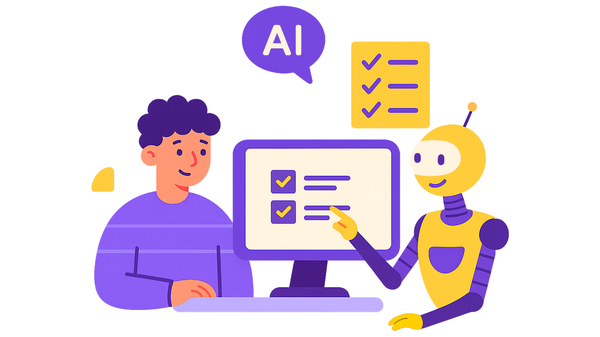How to Avoid Bias When Automating Resume Screening
Learn how to avoid bias when automating resume screening and build a fair, inclusive hiring process with smart, ethical recruitment automation.

Automation has become essential in recruitment. It helps hiring teams manage hundreds of applications quickly, shortlisting candidates in minutes rather than days. Yet this speed brings a question every HR leader must ask: Can automation truly be fair?
When used without care, automated resume screening can unintentionally reinforce existing bias. But when applied thoughtfully, it can become one of the most powerful tools for building diversity and inclusion.
This article explains how bias enters automated systems, how to avoid it, and how to create a process that combines technology, transparency, and human judgment.
What Automated Resume Screening Really Means
Automated resume screening uses artificial intelligence or rule-based systems to review CVs and shortlist candidates. It looks for patterns in skills, experience, and education, ranking applicants according to predefined criteria.
For HR teams managing large volumes of applications, this technology can be transformative. It speeds up decisions, improves consistency, and frees recruiters from repetitive work.
However, without proper safeguards, automation can replicate the very human bias it was designed to eliminate.
Where Bias Comes From in Automated Screening
Bias in automated hiring is rarely deliberate. It emerges through subtle, often overlooked factors.
1. Bias in Training Data
AI models learn from historical hiring data. If your past data reflects unequal hiring patterns, your model will too. For example, if your company has historically hired more men in technical roles, your system might prioritise male-coded career paths.
2. Bias in Keyword Selection
Rule-based filters that depend on specific keywords may inadvertently favour candidates who use certain language styles or qualifications, often associated with particular demographics or regions.
3. Bias in Scoring Logic
Some screening systems assign scores to candidates using variables like previous employers or university names. These factors often correlate with socio-economic background rather than skill or potential.
4. Bias in Human Oversight
Even automated systems need monitoring. Without periodic review, bias can go unnoticed and intensify as data grows over time.
Why Avoiding Bias Matters for Every Organisation
Bias is more than a moral issue; it has legal, financial, and operational consequences.
- Reduced diversity: Limiting candidate variety stifles creativity and innovation.
- Reputational damage: Perceptions of unfairness can deter top talent.
- Legal risk: UK and EU regulations now require transparency in automated decision-making.
A fair, transparent automation process is not just compliant — it is a business advantage.
How to Avoid Bias When Automating Resume Screening
Here are ten evidence-based ways to create an unbiased, inclusive automation process.
1. Establish Objective Hiring Criteria
Before introducing automation, define what success in the role actually looks like. Focus on skills, outcomes, and behaviours rather than background or job titles.
For instance, instead of asking for “five years of management experience”, identify competencies such as “ability to lead a remote team” or “experience managing performance goals”.
This clarity helps automation tools make decisions based on capability, not assumptions.
2. Write Inclusive Job Descriptions
Language influences who applies for your roles. Use inclusive language and remove gendered or culturally coded terms.
Tools like Textio can analyse job descriptions and highlight phrasing that may discourage underrepresented candidates.
By writing fair, balanced job ads, you prevent bias at the earliest stage of the funnel.
3. Choose Transparent and Auditable Automation Tools
Not all recruitment automation platforms are built equally. Select systems that allow you to:
- Review and adjust scoring logic
- Access audit logs showing why a candidate was selected or rejected
- Control weighting of different criteria
Transparency enables you to monitor for bias continuously.
If you are comparing options, our guide on the Small Business Guide to Automating Hiring Without an ATS can help.
4. Clean and Audit Your Data Before Automation
If you train your automation on past hiring data, check it for imbalance. Remove identifiers linked to gender, race, or location.
Example: Instead of including full education data, extract only the qualification level relevant to the role.
Regular audits help you avoid encoding bias directly into your model.
5. Test Your System for Fairness Regularly
Set up quarterly reviews to analyse shortlisting outcomes by gender, ethnicity, and other protected characteristics. Look for patterns that indicate bias, such as consistent underrepresentation in final stages.
If you find disparities, adjust scoring logic or weighting to rebalance the system.
Ethical automation requires continuous refinement — not a one-time setup.
6. Keep Humans in the Loop
Automation speeds up screening, but it should not replace human decision-making.
Human reviewers can:
- Catch context that algorithms miss
- Validate unusual but strong profiles
- Flag potential red flags in automated scoring
A balanced process pairs machine efficiency with human empathy.
7. Limit Keyword Dependence
Systems that rely solely on keyword matching risk filtering out great candidates who use different terminology.
Use tools with natural language processing that can interpret meaning, not just word frequency. For instance, recognising that “client acquisition” and “business development” represent similar skills.
8. Anonymise CVs During Initial Screening
Remove identifying details such as name, address, or graduation year during the first review.
This eliminates the chance of unconscious bias from both automation and recruiters.
Many modern systems offer anonymisation features as standard — a small change that delivers a large fairness gain.
9. Train Your Team on Responsible Automation
Even the most ethical tools can be misused if recruiters do not understand them. Provide short, practical training sessions on:
- How your automation tool makes decisions
- How to interpret AI recommendations
- How to identify potential bias in results
Recruiters who understand the “why” behind automation are more confident and more consistent in its use.
10. Communicate Your Fair Hiring Policy
Transparency builds trust. Publish your commitment to ethical automation and explain how you protect candidates from unfair filtering.
Candidates value clarity, and your openness will strengthen your employer brand.
Balancing Speed and Fairness
Automation should enhance human judgement, not override it.
Think of it as a skilled assistant — handling the heavy lifting so your recruiters can focus on personal engagement and cultural fit.
The best results come from combining technology’s efficiency with human intuition and oversight.
Measuring the Impact of Fair Automation
To confirm your process is working as intended, track these metrics:
- Diversity of shortlisted candidates
- Time saved on manual screening
- Candidate satisfaction feedback
- Ratio of hires from underrepresented groups
If your automation supports both speed and inclusion, you have found the right balance.
Ethical and Legal Considerations
Under the UK Equality Act 2010 and emerging EU AI regulations, employers must ensure that automated systems do not discriminate.
Always choose platforms that comply with data protection standards and provide clear documentation for audits.
If you are considering AI tools for hiring decisions, review Can ChatGPT legally be used to make hiring decisions? for guidance on compliance.
The Role of Recruitment Automation Agencies
Working with a specialist recruitment automation agency can help you design and implement fair, efficient workflows that enhance candidate experience without introducing risk.
From setting criteria to reviewing bias metrics, expert support ensures your automation scales responsibly as your business grows.
Avoiding bias in automated resume screening is not about rejecting technology — it is about using it wisely.
With the right data, transparent systems, and active human oversight, you can build an automation process that saves time, strengthens fairness, and improves hiring outcomes.
Recruitment automation should always empower people, not replace them.
If you would like help building a bias-free hiring system tailored to your organisation, book a call with our team today.




